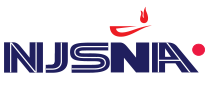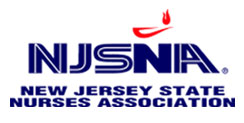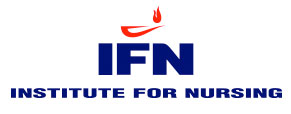What Does Rationing Medical Care Mean During a Surge in Patients?
 Rationing medical care or resources has been an ongoing conversation in parts of the country as the delta variant rages on. Smaller, rural communities do not have the trained staff or equipment to adequately care for the continuing surge of patients.
Rationing medical care or resources has been an ongoing conversation in parts of the country as the delta variant rages on. Smaller, rural communities do not have the trained staff or equipment to adequately care for the continuing surge of patients.
Hospitals in Idaho, Montana, and Alaska have all implemented standards of crisis care which allows medical professionals to do the greatest good for those with the greatest chances of survival. Despite the continued concern regarding the rationing of healthcare, this is not an uncommon occurrence in the United States.
History of Rationing Medical Care
The word “rationing” has a negative connotation in regards to medical care and treatment so it has rarely been used. During COVID, it has been very clear that rationing was being done. Patients with the greatest survival chance were getting the limited resources available. For example, if three patients needed dialysis and only one machine was available then the patient with the greatest success rate would be given access to the machine.
Rationing in the United States is most commonly done by insurance, price, pharmaceutical companies, etc. Those with better insurance carriers may have an easier time gaining access to treatment options including scans and medications. For example, since 2012 the cost of insulin has seen an average annual increase of more than 15%. Newer versions of insulin retailed for between $175 and $300 a vial. The dramatic increase in the price of insulin caused some diabetics to no longer be able to afford their insulin. As a result, patients began to ration their insulin to make it last longer.
Rationing care in the time of COVID
While rationing medical care isn’t a new practice, the continued surge of the delta variant throughout the country has brought it to the forefront of many healthcare systems. On September 16th, healthcare officials in Idaho expanded health care rationing statewide. The Idaho Department of Health and Welfare made the announcement after St. Luke’s Health System, Idaho’s largest hospital network, asked state health leaders to allow “crisis standards of care” because of the continued increase in COVID-19 patients has exhausted medical resources.
Officials announces the standards were implemented due to a severe shortage of staffing and available beds in the northern area of the state caused by the massive increase in patients with COVID-19 who require hospitalization. The crisis standards were initially only limited to ten hospitals and healthcare systems in the panhandle and northern region but were later expanded due to the continuing surge in the number of infected patients.
At the time of this announcement, Idaho was one of the least vaccinated states in the country with only 40% of the population fully vaccinated against COVID-19. As of publication, only 42% of the eligible population is vaccinated and 47% have received at least one dose and the state continues to be in crisis standards of care mode.
Kootenai Health, in Coeur d’Alene, was the first hospital in the state to officially enter crisis standards of care. Chief of Staff Dr. Robert Scoggins said, “Some patients were being treated in a conference center that had been converted into a field hospital and others received treatment in hallways or in converted emergency room lobbies.” Urgent and elective surgeries are on hold across much of the state.
St. Luke’s healthcare system reported that 92% of all of the COVID-19 patients hospitalized were unvaccinated and 61 of the hospital’s 78 ICU patients had COVID-19.
Unfortunately, Idaho isn’t the only state currently rationing medical care due to COVID-19. Alaska’s government officials announced at the beginning of October, that twenty healthcare facilities throughout the state would be operating under the State’s crisis standards of care. Officials are pleading with Alaskan residents to get vaccinated and wear a mask. Alaska reports that 51% of the eligible population is fully vaccinated while 57% have received at least one dose.
Heidi Hedberg, director of the Division of Public Health stated, “We are working alongside our health care facilities to provide state and federal resources to support the surge of patients. We are also imploring Alaskans to do their part. Please get vaccinated if you have not done so already, wear a mask when needed and keep your social circles small. Every action you take helps prevent COVID-19 from spreading and protects you, your family, other Alaskans and our health care system. No one wants to use crisis standards of care guidelines.”
Ethical Considerations
One of the biggest concerns for healthcare providers is the ethical concerns regarding the rationing of medical care. Nurses and doctors work under the ethical principles of beneficence, nonmaleficence, autonomy, and justice. Nonmaleficence, specifically, is the principle to do no harm. By rationing medical procedures, equipment, and care due to short staffing can and often does lead to undesirable patient outcomes.
An intensive care unit nurse from Boise told Nurse.Org anonymously, “On a recent shift we didn’t have enough nurses to help with all of the codes that were occurring throughout the hospital at one time in addition to providing regular care to our ICU patients. The doctors, nurses, we were all spread so thin. A patient died. You can’t help but wonder if there was more that could have been done.”
Nurses aren’t intending to do harm to their patients but it’s the reality when there are not enough resources or trained bodies to go around. While never easy to see a patient get sicker or succumb to their illness, it is happening everyday throughout multiple parts of the country.
Rationing of Nursing Care
According to research, rationing of nursing care (RONC), refers to “necessary nursing tasks that nurses withheld or failed to carry out due to limited time, staffing level, or skill mix.” The result of rationing nursing care is potentially affecting patient outcomes.
RONC became popular in 2008 at the start of the nursing shortage and only became increasingly more common due to the ongoing pandemic. According to The American Nurses Association (ANA), more registered nurse jobs will be available through 2022 than any other profession in the United States. There are estimates that an additional million nurses will be needed in the next decade.
The truth is that the rationing of care has now become more related to the lack of nursing staff, respiratory therapists, and other trained healthcare professionals. “The staffing crisis is the worst it has been,” says Siegel of America’s Essential Hospitals. Health care systems have hundreds of vacancies that can’t be filled, even if they pay top wages because “people just aren’t there anymore.”
(This story originally appeared in Nurse.org.)




